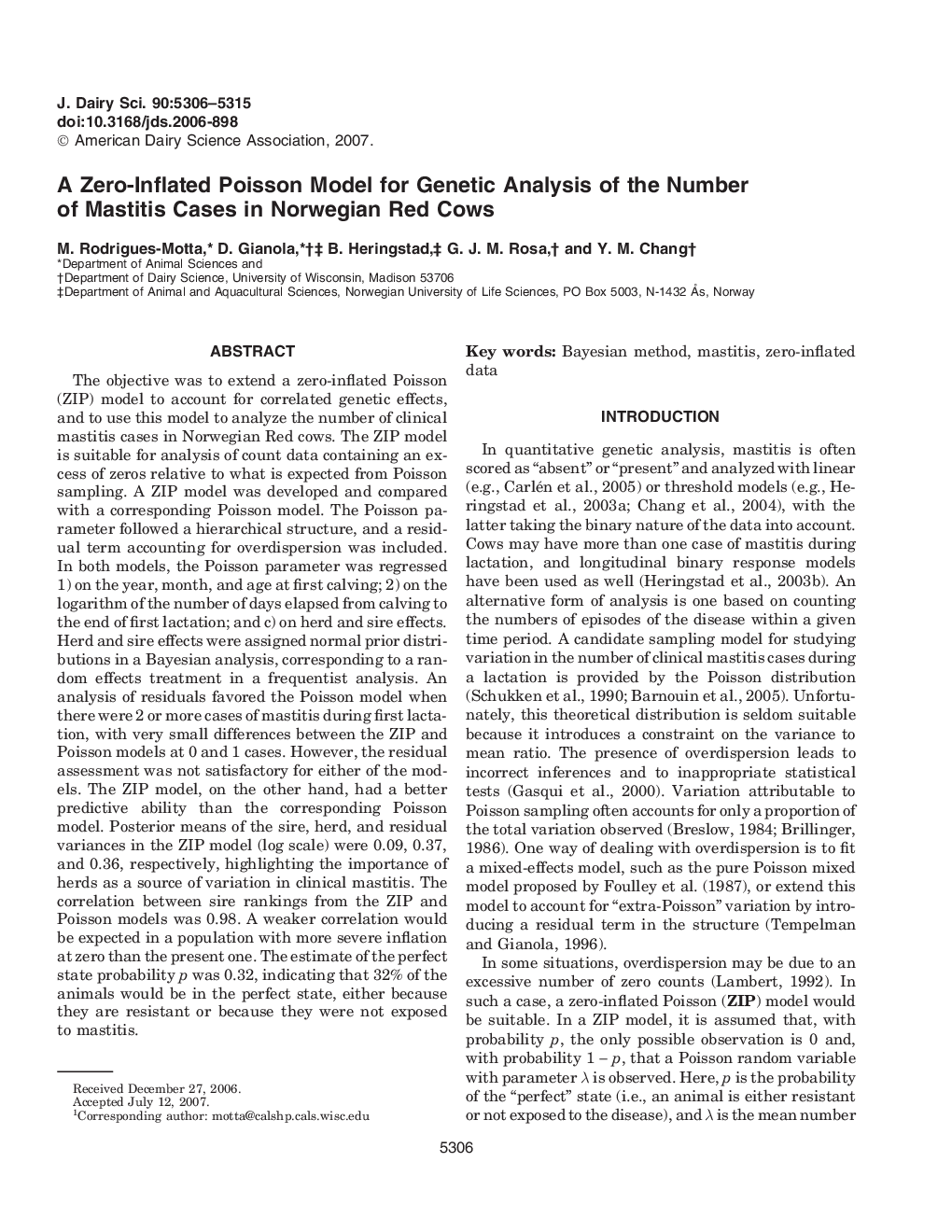| کد مقاله | کد نشریه | سال انتشار | مقاله انگلیسی | نسخه تمام متن |
|---|---|---|---|---|
| 2440020 | 1108109 | 2007 | 10 صفحه PDF | دانلود رایگان |
عنوان انگلیسی مقاله ISI
A Zero-Inflated Poisson Model for Genetic Analysis of the Number of Mastitis Cases in Norwegian Red Cows
دانلود مقاله + سفارش ترجمه
دانلود مقاله ISI انگلیسی
رایگان برای ایرانیان
موضوعات مرتبط
علوم زیستی و بیوفناوری
علوم کشاورزی و بیولوژیک
علوم دامی و جانورشناسی
پیش نمایش صفحه اول مقاله

چکیده انگلیسی
The objective was to extend a zero-inflated Poisson (ZIP) model to account for correlated genetic effects, and to use this model to analyze the number of clinical mastitis cases in Norwegian Red cows. The ZIP model is suitable for analysis of count data containing an excess of zeros relative to what is expected from Poisson sampling. A ZIP model was developed and compared with a corresponding Poisson model. The Poisson parameter followed a hierarchical structure, and a residual term accounting for overdispersion was included. In both models, the Poisson parameter was regressed 1) on the year, month, and age at first calving; 2) on the logarithm of the number of days elapsed from calving to the end of first lactation; and c) on herd and sire effects. Herd and sire effects were assigned normal prior distributions in a Bayesian analysis, corresponding to a random effects treatment in a frequentist analysis. An analysis of residuals favored the Poisson model when there were 2 or more cases of mastitis during first lactation, with very small differences between the ZIP and Poisson models at 0 and 1 cases. However, the residual assessment was not satisfactory for either of the models. The ZIP model, on the other hand, had a better predictive ability than the corresponding Poisson model. Posterior means of the sire, herd, and residual variances in the ZIP model (log scale) were 0.09, 0.37, and 0.36, respectively, highlighting the importance of herds as a source of variation in clinical mastitis. The correlation between sire rankings from the ZIP and Poisson models was 0.98. A weaker correlation would be expected in a population with more severe inflation at zero than the present one. The estimate of the perfect state probability p was 0.32, indicating that 32% of the animals would be in the perfect state, either because they are resistant or because they were not exposed to mastitis.
ناشر
Database: Elsevier - ScienceDirect (ساینس دایرکت)
Journal: Journal of Dairy Science - Volume 90, Issue 11, November 2007, Pages 5306-5315
Journal: Journal of Dairy Science - Volume 90, Issue 11, November 2007, Pages 5306-5315
نویسندگان
M. Rodrigues-Motta, D. Gianola, B. Heringstad, G.J.M. Rosa, Y.M. Chang,